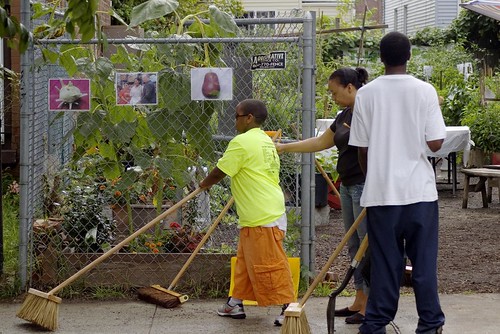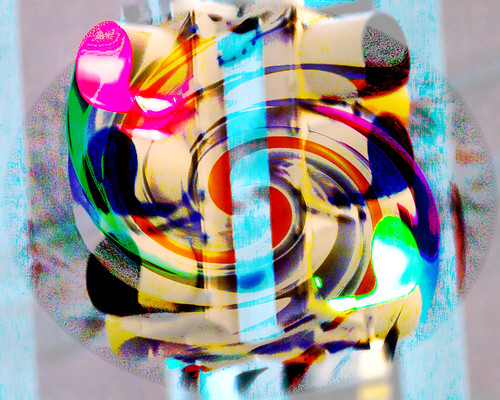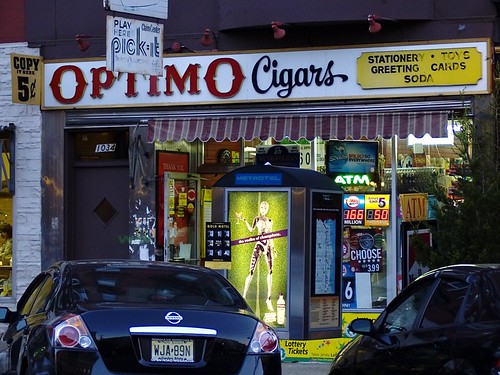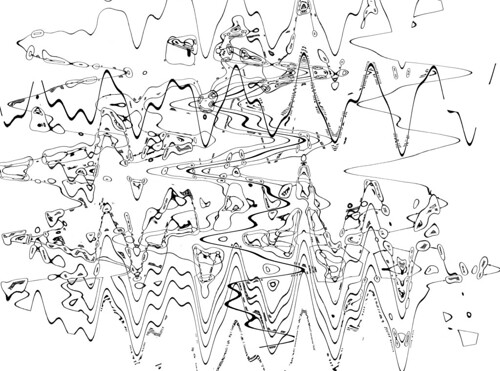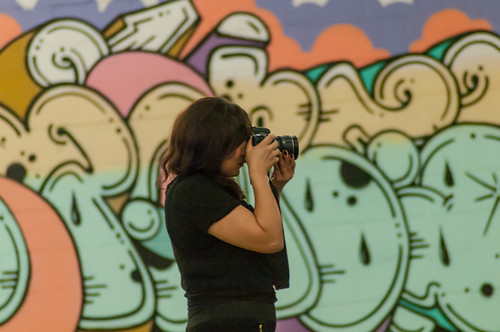A couple years ago i lived in the Lafayette neighborhood of Jersey City. In the late summer of 2012 the neighborhood had its first block party in years, Lafayette Rising. It was combined with a neighborhood clean-up. Here's a few photos:
Friday, July 31, 2015
Why Did Europe Conquer the World?
Martin Vander Weyer reviews Philip T Hoffman, Why Did Europe Conquer the World?
Its starting point is the assertion that Europe really did conquer the world, or at least 84 per cent of it, between 1492 and 1914 – but that you probably would not have bet on that outcome had you landed on Earth in the year 900, when our continent was deeply backward in comparison with the cultural and commercial sophistication of the Muslim Middle East, southern China and Japan.
H/t 3QD.So why did those early leaders of civilisation stay at home and regress, while our ancestors sailed the seas and built empires?It was not a matter of economic supremacy through industrialisation, which arrived only in the last of the five centuries or so that Hoffman’s study covers.Rather, he argues, it was down to both military and economic advantage gained through “gunpowder technology” – the continuing development of firearms, artillery, ships armed with guns and fortifications that could resist bombardment – which itself derived from the fact that warfare was “the sole purpose of early modern states in western Europe”.The core of Hoffman’s analysis is the idea that European powers were engaged in a centuries-long “tournament” – a competition that drove contestants to exert enormous effort in the hope of winning a prize. In pursuit of “financial gain, territorial expansion, defence of the faith, or the glory of victory”, Europe’s rulers fought each other for two thirds of the time between 1550 and 1700; well over 80 per cent of the annual government budgets of England and Prussia between 1688 and 1790 were spent on waging war.
Thursday, July 30, 2015
Ta-Nehisi Coates, Malcolm X, Game Theory, and Expressive Culture
As the title says, I’ve got more to say about the phenomenon of Ta-Nehisi Coates. In the first place, I’m wondering is his writing is affecting people now in the way that The Autobiography of Malcolm X affected me back in the late 1960s. So I start by talking about that. Then I suggest that the story of the emperor’s new clothes, as explicated by game theory, gives us a way of thinking about Coates’ impact. He’s the little boy who tells the crowd that the emperor is naked. Game theory gives us a way of generalizing from that story that side-steps the religious analogy.
The Autobiography of Malcolm X and The Nation of Islam
The Autobiography of Malcolm X, which he co-wrote with Alex Haley, was published in 1965, though I didn’t read it until a couple of years later, probably in the summer of 1966 between my freshman and sophomore years of college. It hit me like a ton of bricks, though beyond that I can’t say. I simply don’t remember anything beyond the fact of the book’s impact.
Why did it hit me so hard? Simple: I’d never read anything like it, at least framed as non-fiction. I was politically left, perhaps even radical – I belonged to Students for a Democratic Society rather than to the campus Democratic organization, whatever it was called – and supported the Civil Rights movement, which I’d watched on television. I believed in equality, and so forth, though the anti-war movement was more pressing.
There’s nothing surprising about this. After all, I’d lived a white middle-class life. I grew up in a white suburb of Johnstown in western Pennsylvania. The only ethnic-cultural issue that had any impact on my daily life was Catholics vs. Protestants, and that was mostly about who went to school where and what terms the high school sports terms competed against.
Going to college at Johns Hopkins changed that a bit. I was now living in a city of some size and, for the first time in my life, Jews became real to me. There’d only been one Jewish family in my neighborhood back home, but Jews constituted a large proportion of the student body at Hopkins and I found most of my friends among them.
Baltimore, of course, is, and was back then (I assume), a majority black city. But the Hopkins campus – the arts and sciences school – is in North Baltimore, which is mostly white, and it abuts the lower edge of the Roland Park neighborhood, which had houses of size and even grandeur. If there were no black students in the student body at Hopkins in 1965 – something that would change in a couple of years – the university had black employees. That’s when I first encountered a college graduate working a clerk’s job, in the campus bookstore.
So African Americans were no longer quite so exotic – perhaps not the best word, but it points in the right direction – they weren’t on the “inside” of the world I lived in either. I had no black friends, had no meals in black homes, nor did I build anything with black friends and colleagues.
And then there's reading Malcolm X about living as a black man in a white world, that was quite a shock. So THAT’s why the man is angry, thought I to myself. Until I read that book, Martin Luther King was just fine, but Malcolm X and the Nation of Islam, not so good. Now the Nation of Islam made sense to me in a way it hadn’t before. That was a rational response to irrational injustice.
But beyond that, well, I marched against the war in Vietnam, got drafted and did alternative service in the Chaplain’s Office at Hopkins, attended Sunday afternoon jazz concerts at the Left Bank Jazz Society, where the audiences were majority black, but none of that had anything directly to do with improving the lives of black people.
What does it matter that I believed then, and still do, that the foundations of the modern world were laid on the corpses of enslaved laborers, that African Americans have suffered a grave injustice, and that injustice persists? I’m not saying or implying that such belief doesn’t matter, but only pointing out that belief is one thing, social action is another. Reading can have a direct effect on one’s beliefs. How one acts on those beliefs is a different matter.
Wednesday, July 29, 2015
Obama’s Eulogy for Clementa Pinckney: Technics of Power and Grace
I've uploaded a new working paper. Links etc. below:
- Academia.edu: https://www.academia.edu/14487024/Obama_s_Eulogy_for_Clementa_Pinckney_Technics_of_Power_and_Grace
- Social Science Research network: http://ssrn.com/abstract=2637414
Abstract: President O'bama’s eulogy for Clementa Pinckney took the form of a sermon in the black vernacular tradition. This particular sermon exhibits ring-form composition; as such it is symmetrical about a structural midpoint. It opens with the recitation of a scriptural passage and closes with the hymn, “Amazing Grace”. Grace is introduced as a theme in the middle section, which is also where Obama mentions the killer. The sermon is placed in a traditional of black performance going back to 19th century camp-meetings. Finally it is suggested that the performance takes place in an emerging discursive space that is neither religious nor political, but partakes of both.
C O N T E N T S
Introduction: Confluence 2
Obama’s Pinckney Eulogy and the Place of Religious Discourse in Civic Life 4
The Circle of Grace 9
Performing Black, Three Discussions 12
The Technics of Grace 16
To Redeem a Nation 21
Appendix 1: Black Preaching, the Church and Civic Life 28
Appendix 2: Text of the Eulogy 31
Appendix 3: Loury and McWhorter on Ta-Nehisi Coates 36
Introduction: Confluence
The posts in this document lie at the confluence of three streams of inquiry. Two are obvious: 1) African-American culture and 2) literary form and mechanism. And one is not so obvious: 3) the future. Let us consider them in turn.
My interest in African-American culture centers on music and, within music, predominantly jazz. Just how I became interested in jazz is not entirely clear. While there was music in the house when I was growing up, my father liked classical music, Beethoven in particular; there was no jazz. I found that by myself but the mystery is where and how.
The only thing I’m sure is that Disney had something to do with. He had two shows on TV, the Mickey Mouse Club, which aired on weekday afternoons, and his omnibus show which aired on Sunday evenings. Both would occasionally feature a Dixieland band called The Firehouse Five Plus Two. I heard them and loved them. And somehow I found my way to jazz records at the local discount department store: Louis Armstrong, Maynard Ferguson, Miles Davis, Dizzy Gillespie, and others – I favored trumpet players because I was myself learning trumpet at the time.
From the music itself I became interested in the musicians and began reading jazz biographies. Somewhere along the line I learned that this music had roots in the black church. And that, as they say, blew my mind. There was no music remotely like that in the church I’d attended as a child. And so my interest in the music and the musicians became an interest in the culture and its interaction with and influence on American culture in general.
I suppose my interest in literature is grounded ultimately in the fact that I loved to read. But I didn’t go to college to study literature. I went to study philosophy;I figured that was where you got to put everything together. Wbat I discovered is that while academic philosophy had its points of interest, it was not a discipline where one worked on broad intellectual synthesis.
But literature, that turned out to be more a promising arena for synthesis, particularly as it was taught by Richard Macksey at Johns Hopkins, where I did my undergraduate work. The story of how I went from an interest in literature to a specific interest in form and mechanism is more complex than we need entertain here. Suffice it to say that it happened.
And then three decades or so after that, early in this millennium, I entered into correspondence with Mary Douglas, the great anthropologist. She got me interested in ring-composition, in which the sections of the text are symmetrically arrayed about a mid-point (I explain this more fully later). It’s a form mostly studied by Biblical scholars and classicists, but Douglas was attempting to broaden attention to the form and, to that end she gave a series of lectures at Yale which became her last academic book, Thinking in Circles.
Once Douglas had gotten me interested in the form I found examples in modern texts – Tezuka’s Metropolis, Conrad’s Heart of Darkness – and films – three episodes in Disney’s Fantasia, the original Japanese Gojira, (as opposed to the American re-edit and re-shoot as Godzilla, King of the Monsters) and Apocalypse Now. I wasn’t looking for another example when I starred working on Obama’s Pinckney eulogy, but indicators quickly appeared (e.g. the distribution of the word “grace” in the text) and, with a bit of work, the pattern became clear.
That’s all well and good, you say, but what has any of that to do with the future? Consider this paragraph near the end of the eulogy:
Reverend Pinckney once said, “Across the South, we have a deep appreciation of history – we haven't always had a deep appreciation of each other's history.” What is true in the South is true for America. Clem understood that justice grows out of recognition of ourselves in each other. That my liberty depends on you being free, too. That history can't be a sword to justify injustice, or a shield against progress, but must be a manual for how to avoid repeating the mistakes of the past – how to break the cycle. A roadway toward a better world. He knew that the path of grace involves an open mind – but, more importantly, an open heart.
“A roadway toward a better world.” A better world, in the future.
At the same time I’ve been thinking about Pope’s recent encyclical, Laudo Si’, a religious document with tremendous political implications, that put it in the same place in my mind as Obama’s eulogy, and that looked to the future as well. As tenuous as it is, that’s really it, this look to the future.
But there’s one more thing. As I began thinking about the post for 3 Quarks Daily that became the first section of this document I listened to a discussion that Glenn Loury and John McWhorter had about the journalist Ta-Nehisi Coates as a quasi-religious figure. But their remarks struck me as being reasonable. And what their remarks did was lead me to postulate the emergence of a liminal space, an undefined region of discursive possibility, that is emerging in contemporary discussions. That’s where we also find Obama’s eulogy and Laudo Si’.
Is this where we begin to forge the outlines of new ways of being in the world, of 21st Century society and culture? I don’t know, but that’s what’s on my mind these days.
* * * * *
About the rest of this document:
Obama’s Pinckney Eulogy and the Place of Religious Discourse in Civic Life: This is the last post I wrote in this series. This is where I suggest, as I’ve already stated, that we’re seeing the emergence of a new future oriented-dialog.
The Circle of Grace: I lay out the possibility that the eulogy is a ring-form and concentrate on the mid-section, where Obama mentions the murders and where grace becomes a theme.
Performing Black, Three Discussions: Here I trascribe sections of three interviews: 1) Glenn Loury and John McWhorter discussing Obama, 2) Barack Obama and Marc Maron discussing comedians, and 3) Ike Turner and Sam phillips discussing Elvis Presley.
The Technics of Grace: Here I discuss the rest of the eulogy, how Obama moves two and then frum the middle section, and clinch the ring-form analysis. I also remark on audience interaction, which we can judge from the video tape.
To Redeem a Nation: Here I discuss Obama’s choice to deliver this address in a specifically black style and say a bit about the history of black expressive style.
Appendix 1: Black Preaching, the Church and Civic Life: This is an older post about the potential of black preaching to enrich our civic life in general.
Appendix 2: Text of the Eulogy: This is the entire text, to which I have added paragraph numbers for ease of reference during analysis and description.
Appendix 3: Loury and McWhorter on Ta-Nehisi Coates: This is a large part of the discussion of Coates as a quasi-religious figure and, in general, of the emergence of antiracism as a secular religion.
Finally, when working on the eulogy I created a set of analytic and descriptive tables, President Obama’s Eulogy for Clementa Pinckney, Analytic and Descriptive Tables. Here’s the link where you can download them:
Tuesday, July 28, 2015
McWhorter on Antiracism as Religion, and Beyond
Yesterday I published a post at 3 Quarks Daily in which I quoted a July 21 remarks between John McWhorter and Glenn Loury to the effect that antiracism has become something like a religion. In particular, they focused on the writing of Ta-Nehisi Coates. McWhorter has now published a piece in The Daily Beast, Antiracism, Our Flawed New Religion.
Religion vs. Practical Action
In view of that piece I’d like to continue the discussion. First, here’s a bit of the Loury/McWhorter discussion I didn’t quote. This is McWhorter at about 35 minutes in:
What we’re talking about as not worthy, what you see as condescending, David Brookes pretending to think that he has no right to question something that somebody wrote just because they’re black and they have a way with a pen, none of that has anything to do with being concerned with black uplift. And black uplift has to take place separately from that. It has nothing to do with Charles Blow and his artful prose. So all those people are going to be doing the Bible. That’s what they’re doing, I think of it these days. It’s religion and I can’t say it’s a terrible thing, but it will have nothing to do with changing poor black people’s lives.
So, the religion of antiracism is one thing while political and social action that will improve black lives is something different. One of McWhorter’s concerns, obviously enough, is that the religion will distract attention and action away from concrete action.
Here’s a passage from McWhorter’s new article:
Coates is “revered,” as New York magazine aptly puts it, as someone gifted at phrasing, repeating, and crafting artful variations upon points that are considered crucial—that is, scripture. Specifically, Coates is celebrated as the writer who most aptly expresses the scripture that America’s past was built on racism and that racism still permeates the national fabric.The very fact that white America today cherishes this religion is evidence that Coates’s particular pessimism about America and race is excessive. This became especially clear last year with the rapturous reception of Coates’s essay, “The Case for Reparations.” It was beautifully written, of course, but the almost tearfully ardent praise the piece received was about more than composition. The idea was that the piece was important, weighty, big news. But let’s face it—no one, including Coates himself, I presume, has any hope that our current Congress is about to give reparations for slavery to black people in any significant way. Plus, reparations had been widely discussed, and ultimately put aside, as recently as 15 years ago in the wake of Randall Robinson’s The Debt. Yet Coates’s article was discussed almost as if he were bringing up reparations as a new topic.
Here is a passage from Coates’ piece that gives some idea of what he’s looking for:
A crime that implicates the entire American people deserves its hearing in the legislative body that represents them.John Conyers’s HR 40 is the vehicle for that hearing. No one can know what would come out of such a debate. Perhaps no number can fully capture the multi-century plunder of black people in America. Perhaps the number is so large that it can’t be imagined, let alone calculated and dispensed. But I believe that wrestling publicly with these questions matters as much as—if not more than—the specific answers that might be produced. An America that asks what it owes its most vulnerable citizens is improved and humane. An America that looks away is ignoring not just the sins of the past but the sins of the present and the certain sins of the future. More important than any single check cut to any African American, the payment of reparations would represent America’s maturation out of the childhood myth of its innocence into a wisdom worthy of its founders.
Coates had earlier noted that Conyers has been introducing his reparations bill, HR 40, annually for the last quarter century and had gotten nowhere with it, and all it called for was to study the issue. That is, all that Coates is calling for is a grand ‘conversation on race’ inscribed within the conditions of HR 40, whatever they may be. It is not a call to action. It is, to use a word that Loury had introduced into his conversation with McWhorter, an expressive act.
Moreover one wonders just who and what Coates meant by reference to "a wisdom worthy of [America's] founders". Does that include the founders who held slaves? While one can reasonably argue that having wisdom and holding slaves are not necessarily exclusive, an article on reparations is a strange place to let that conjunction pass without argument, and argument on the matter would surely sidetrack the discussion. Did no one at the magazine spot this problem? If so, i'd really like to know why it was allowed to pass without comment? If not, how could anyone have possibly missed it? For that matter, how could Coates have possibly written it, unless he needed desperately to believe in founders free of the taint of racism?
Moreover one wonders just who and what Coates meant by reference to "a wisdom worthy of [America's] founders". Does that include the founders who held slaves? While one can reasonably argue that having wisdom and holding slaves are not necessarily exclusive, an article on reparations is a strange place to let that conjunction pass without argument, and argument on the matter would surely sidetrack the discussion. Did no one at the magazine spot this problem? If so, i'd really like to know why it was allowed to pass without comment? If not, how could anyone have possibly missed it? For that matter, how could Coates have possibly written it, unless he needed desperately to believe in founders free of the taint of racism?
Monday, July 27, 2015
@3QD: Obama’s Pinckney Eulogy, Ta-Nehisi Coates as “Priest”, Laudato Si’
The topic: The place of religious discourse in civic life.
Initially prompted by some remarks by Glenn Loury and John McWhorter from June 29, I took a close look at Obama’s eulogy for Rev. Clementa Pinckney and was stunned. The particular question that attracted my attention was the issue of Obama’s ‘authenticity’ as he enacted the role of a black preacher and transformed the eulogy into a sermon on race relations in the USA. So I transcribed part of their conversation and started thinking.
And I thought that I really ought to write a blog post addressing the authenticity issue. I ended up writing four posts. I devoted two posts to a close analysis of Obama’s eulogy, discovering – to my delight and surprise – that is exhibited ring-composition, one of my particular interests. Another post consists of transcribed conversation, the Loury-McWhorter conversation that got me started, a conversation between Pres. Obama and Marc Maron, and one between Ike Turner and Sam Phillips (the producer who discovered Elvis Presley). And my final post took up the authenticity issue, with a look into the past through Duke Ellington, Elvis Presley, and 19th Century camp meetings, and concluding with some remarks on the quasi-political quasi-religious nature of the President’s remarks.
As I was working into, through, and beyond that last post I began to think of the Pope’s recent encyclical, Laudo Si’, a religious document with tremendous political implications. That put it in the same place, in my mind, that I had just created for Obama’s eulogy. And these two statements came within a month of one another.
Is something afoot, I wondered, something between and around religion and politics?
As I was thinking about that, and thinking about what I’d write for my up-coming 3 Quarks Daily column, I listened to another Loury-McWhorter discussion, this one was about Ta-Nehisi Coates as a quasi-religious figure. I’ve read a few pieces by Coates, but nothing in the last year or so. But their remarks struck me as being reasonable. What’s more, it seems to me that they were defining this liminal space where we find Obama’s eulogy and Laudato Si’.
And that became my 3QD column, where I place those documents in evidence for a discussion of the role of religious discourse in public life. You can find that colunn HERE. Below the asterisks I've placed my transcription of Loury and McWhorter on Ta-Nehisi Coates.
* * * * *
Here’s the Blogginheads.tv conversation:
Sunday, July 26, 2015
On Laudato Si’ as a political document
Robert Manne in The Monthly, July 1:
Where Al Gore and Pope Francis part company is over the relation of the climate crisis to contemporary industrial civilisation.For Gore the fundaments of this civilisation are unquestioned. For Pope Francis the climate crisis is only the most extreme expression of a destructive tendency that has become increasingly dominant through the course of industrialisation. Judaeo-Christian thought “demythologised” nature, breaking with an earlier worldview that regarded nature as “divine”. But as the industrial age advanced, by ceasing to regard the Earth, our common home, with the proper “awe and wonder”, humans have come to behave as “masters, consumers, ruthless exploiters, unable to set limits to our immediate needs.” “Never have we so hurt and mistreated our common home as we have in the past two hundred years.” The vision of the encyclical is not straightforwardly anti-modernist, although I have no doubt that it will be mischaracterised in this way. The advances in the fields of medicine, engineering and communications are welcomed. “Who,” Francis exclaims at one point in the encyclical, “can deny the beauty of an aircraft or a skyscraper?” But for him, in the end, the treatment of the Earth as a resource to be mastered and exploited; the limitless appetite for consumption that has accelerated during the past 200 years of the industrial age and has culminated in our “throwaway culture”; and the most extreme consequence of the contemporary crisis of post-industrial society, the climate emergency – are inseparable phenomena, part of a general and profound civilisational malaise. “Doomsday predictions,” the encyclical claims, “can no longer be met with irony or disdain. We may well be leaving to coming generations debris, desolation and filth. The pace of consumption, waste and environmental change has so stretched the planet’s capacity that our contemporary lifestyle, unsustainable as it is, can only precipitate catastrophe.”Why has this come to pass? The encyclical argues that we have become slaves both to what is called the “technological paradigm” and the theory of market fundamentalism. […]
But “everything is related” has another meaning. In the contemporary world there exist not “two separate crises, one environmental and the other social, but … one complex crisis which is both social and environmental.” The most important connection between the twin social and environmental crises is expressed in these words. “A sense of deep communion with the rest of nature cannot be real if our hearts lack tenderness, compassion and concern for our fellow human beings.” The human family is disfigured by radical inequality. This inequality should arouse our “indignation”. It rarely does.
Black Preaching, the Church, and Civic Life
I can’t say that I’ve even thought of that topic until a couple of year ago when I visisted a church in Jersey City, when I was living at the time (I'm now in Hoboken, just a bit north). Most recently, of cousre, I've been reflecting on President Obama's recent eulogy for Clementa Pinckney. Where I’m going is that, if we’re going to make substantial changes in how this country, these United States of America, goes about its business, if we’re going to forge a more just and more sustainable union, we’ve got to be grounded in something, something that doesn’t quite exist. Perhaps black preaching has a role to play in that something.
Civics 101: Legitimizing the State
Let’s start with the second paragraph of the Declaration of Independence:
We hold these Truths to be self-evident, that all men are created equal, that they are endowed by their Creator with certain unalienable Rights, that among these are Life, Liberty, and the Pursuit of Happiness—That to secure these Rights, Governments are instituted among Men, deriving their just Powers from the Consent of the Governed, that whenever any Form of Government becomes destructive of these Ends, it is the Right of the People to alter or to abolish it, and to institute new Government, laying its Foundation on such Principles, and organizing its Powers in such Forms, as to them shall seem most likely to effect their Safety and Happiness.
As I’ve observed in another post:
In Jefferson’s formulation the government gains its power by grant from the people. The people, in turn, gain their power, their unalienable rights, from their Creator. This reverses the logic of legitimization prevailing in traditional European monarchies. In those governments the rulers got their legitimacy from God and their subjects, in turn, got their rights and obligations through their relationship to the ruler. In that scheme democracy is implausible. Jefferson, and the new nation, emphatically rejected that scheme in favor of a different one.
In this new system the separation of church and state secures two ends, religious freedom and, even more fundamentally, the state itself. The first is obvious, and has occasioned much discussion. The second seems obvious as well, but is somehow more subtle. How can the people legitimize the state unless their authority is itself independent of that state? The only way to guarantee that independence is to guarantee the separation of church and state.
And that, I suggest, may be why religion has been so important in American society. For a large fraction of the population, though not for all, it has been the ground of capital “B” Being on which their sense of themselves-in-the-world depends.
The rest of that post elaborates on that last paragraph and its implications. I assume that argument for the rest of THIS post, but I have something different in mind.
What has happened in this country is that, while we the people retain the nominal power of legitimizing the national government through our votes, both for the President and for congressmen, that power has become only nominal. Whoever we vote for we get a government that’s run by the corporations, for the corporations, and over we the people.
The Church in 21st Century America
How do we reverse that? Where do we get the power to wrestle the government away from the corporations? What I’m wondering is whether or the church is where we’re going to have to find that power.
Saturday, July 25, 2015
Religion in America, Going Forward
In view of my current inquiry in the Reverend President's eulogy for Clementa Pinckney I thought I'd bump this to the top of the pile.
* * * * *
A couple years ago I wrote a post about a church service I’d recently attended, remarking both on the power of the pastor’s preaching, its effect on his congregation, and on his responsibility to them. It was clear to me that he was energizing them to go out a face the world in a constructive frame of mind.
A friend of mine, a man I’ve known for almost 40 years, replied by indicating that he’d been lurking on a list of Unitarian ministers that was currently discussing Black Preaching: The Recovery Of A Powerful Tool by Henry H. Mitchell. This paragraph seems to have been particularly provocative:
As has been noted, worship among Whites and Blacks was similar during the Great Awakenings. It might now be asked why audible response or dialogue disappeared from mainline Protestant patterns of worship. One guess is that the preaching material soared beyond the intellectual reach of the congregation. This occurred, perhaps, because Protestant seminaries had engaged in a contest of one-upmanship with the graduate divisions of the liberal arts colleges, creating scholars instead of professionals skilled in reaching people. With such standard conditioning in the theological schools, the preacher might well be expected to be intellectual in concerns rather than interested in the day-to-day issues of ordinary people. It follows that in such a school-conditioned, abstract atmosphere, answering back would soon be considered by the preaching scholar as impolite and disruptive. This attitude would increase the inhibitions of an audience eager to please. Modern-day experiments in the middle-class church, in which dialogue takes place during and after the sermon, seem clearly to support this hypothesis. In the planning of the talk-back after the service, great care is taken to pitch the dialogue within the intellectual reach of the laity involved. It is encouraging to speculate that the middle-class model may now be drifting away from the graduate classroom and back to the pattern once shared by Blacks and Whites in the preaching event.
Friday, July 24, 2015
Obama’s Eulogy for Clementa Pinckney 4: To Redeem a Nation
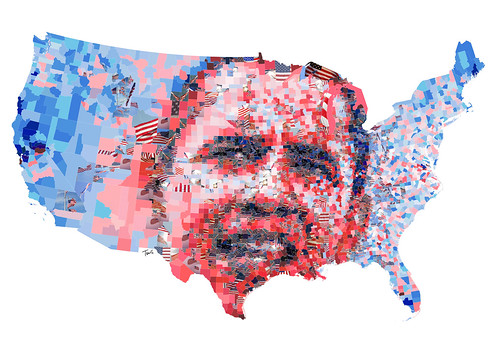 |
| Barack Obama: The red, the blue and the United States of America by Charis Tsevis |
* * * * *
I know what I’m doin’ and I’m fearless.
– Barack Obama, June 22, 2015
One of my regular stops on the Internet is Bloggingheads.tv, a series of online discussions produced and curated by Robert Wright, author of Nonzero, and several other books. The format is simple: two people talk about this that and the other. The people are not in the same physical location, so their conversation is mediated by appropriate web-tech.
While Wright himself is a party to many of these conversations, most of them feature others. My favorite host is Glenn Loury, an economist at Brown University, and his most frequent, though not only, interlocutor is John McWhorter, a linguistic at Columbia. On June 29, 2015, they had a conversation that started with the terrorist murders in Charlston, moved onto the Confederate flag, to Al Sharpton, and then to Obama’s Eulogy for the Rev. Clementa Pinckney. Loury initiates that discussion at roughly 38:14:
Loury’s point was that not only was Obama eloquent, as one would expect of a President (who, after all, has speech writers, though Loury didn’t say this), but that Obama delivered his eulogy in the voice and persona of a black preacher working in the vernacular tradition (and he mostly re-wrote the speech he was handed by his chief writer, though Loury didn’t say this either). His whole presentation was recognizeably African-American, which was certainly appropriate for the occasion and the audience. But when was the last time an American President ever did that?
McWhorter agreed, pointing out that we have seen “a browning of the culture […] America's all about vernacular […] He really was, in that setting, a national spokesman in a way that many other people could not be, and that he would not have been as recently as 30 years ago. We're a very different place than we used to be.” Nor could a black man have been elected to the Presidency 30 years ago, though McWhorter didn’t say that.
Do colleges and universities exist?
Well, sure they do. But the question is what holds them together beyond the physical plant and payment arrangements for students, faculty, and staff. Are they bound together by educational philosophy and practice that's consistent across departments and individual faculty? Writing in the NYTimes, Kevin Carey says that, no, they don't exit. It's a shell game:
This goes a long way toward explaining why colleges spend so much time and effort creating a sense of tribal solidarity among students and alumni. Think of the chant that Joe Paterno and students cried out together at the height of their university’s pedophilia scandal: “We are! Penn State!” The costumes, rituals and gladiatorial contests with rival colleges are all designed to portray the university as united and indivisible. Newer colleges that lack such deeply rooted identities spend millions of dollars on branding consultants in order to create them. […]People can learn a lot in college, and many do. But which college matters much less than everyone assumes. As Mr. Pascarella and Mr. Terenzini explain, the real differences exist at the departmental level, or within the classrooms of individual professors, who teach with a great deal of autonomy under the principles of academic freedom. The illusory university pretends that all professors are guided by a shared sense of educational excellence specific to their institution. In truth, as the former University of California president Clark Kerr observed long ago, professors are “a series of individual faculty entrepreneurs held together by a common grievance over parking.”The problem for students is that it is all but impossible to know ahead of time which part of the disunified university is which. Consumers of higher education have been taught that their main choice lies between whole institutions that are qualitatively different from one another. Because this is wrong, the higher education market often fails, which is probably one reason that a third of students who enroll in four-year colleges transfer or drop out within three years.
Thursday, July 23, 2015
Is Slavery the Original Sin of Capitalism and Modernity?
Greg Grandin, Capitalism and Slavery, in The Nation:
Slavery created the modern world, and the modern world’s divisions (both abstract and concrete) are the product of slavery. Slavery is both the thing that can’t be transcended but also what can never be remembered. That Catch- 22—can’t forget, can’t remember—is the motor contradiction of public discourse, from exalted discussions of American Exceptionalism to the everyday idiocy found on cable, in its coverage, for example, of Baltimore and Ferguson.
Wednesday, July 22, 2015
Obama’s Eulogy for Clementa Pinckney 3: The Technics of Grace
The Eulogy was not merely a text, but a performance: what does it do? How does it work?
My purpose here is not to engage in the job of hunting for hidden meaning in Obama’s text, for everything is there for us to see. Rather, I only wish to call attention to the obvious and therefore to highlight patterns that may not be so obvious.
Here’s the major sections of Obama’s speech as I laid them out in my first post:
1. Prologue: Address to his audience, quoting of a passage from the Bible.2. Phase 1: Moves from the Clementa Pinckney’s life to the significance of the black church in history.3. Phase 2: The murder itself and presence of God’s grace.4. Phase 3: Looks to the nation, the role racism has played, and the need to move beyond it.5. Closing: Amazing Grace.
As before, I’ve attached a copy of Obama’s text to the end of this post, with the paragraphs numbered; you can also access an analytical table of the text HERE. You can view the complete performance HERE.
The Beginning and the End
Let’s start with the beginning, which is simple and straight forward:
1. Giving all praise and honor to God.2. The Bible calls us to hope. To persevere, and have faith in things not seen.3. “They were still living by faith when they died,” Scripture tells us. “They did not receive the things promised; they only saw them and welcomed them from a distance, admitting that they were foreigners and strangers on Earth.”4. We are here today to remember a man of God who lived by faith. A man who believed in things not seen. A man who believed there were better days ahead, off in the distance. A man of service who persevered, knowing full well he would not receive all those things he was promised, because he believed his efforts would deliver a better life for those who followed.5. To Jennifer, his beloved wife; to Eliana and Malana, his beautiful, wonderful daughters; to the Mother Emanuel family and the people of Charleston, the people of South Carolina.
Note that while paragraphs 2 and 3 are connected by a logical progression, as are 3 and 4. That is not the case between 1 and 2 nor between 4 and 5.
What’s going on?
Obama opens with a straightforward assertion: “Giving all praise and honor to God.” Right away he is telling us that this is not going to be an ordinary Presidential speech: Presidential speeches do not ordinarily begin that way. Moreover, while as President he is the highest authority in the land – note that he has the power to pardon people of crimes and (in practice) the power to commit the nation to war (if not in Constitutional law) – he is here acknowledging a higher power than even he possesses.
Not only is there a higher power, but there is a higher order. And that order is not visible to us. That is our (hidden) link from the first to the second paragraph, where we are enjoined to “have faith in things not seen.” That in turn takes us to the third paragraph, a Bible verse (Hebrews 11:13) telling us to have faith and that we are “strangers on Earth.”
Only then does Obama introduce Pinckney, though not by name, and he introduces him in terms he set out in paragraphs 1, 2 and 3. He is “a man of God” (1) who “lived by faith” (2 & 3). Obama picks up the theme of distance – “better days ahead, off in the distance” – and closes on perseverance. These connections, of course, are crucial, for Obama will spin out his sermon in the space between the Biblical verse – which is the key to the hidden order, the sacred order – and the now deceased man who followed its promptings.
Tuesday, July 21, 2015
Music moves us
2. Movement: Music Moves You, Even If You Refuse to Dance
Humans are one of the extremely few species that can synchronize their body movement to music (even babies do it - take a look at this popular video clip of 11-month-old infants trying to sync to the beat!). Brain imaging studies have shown that the motor areas of the brain are active even during passive listening to musical rhythms without any movement (11). It has been said that music prepares people for movement. But how is this special property of music connected to the experience of emotions?
It has been proposed (12) that the aforementioned human mirror neuron system could in fact also encode the movements conveyed by melodies. This would mean that the system might process movement in music like physical movement. In other words, an upward going melody would be processed in the brain as upward movement. And as upward movement is typically related to experiences like jumping for joy, this mirroring in the brain (however, without overt movement) would contribute to the recognition and experience of the emotion conveyed by the music.
It also seems that acoustic features of music as well as characteristics of physical movement may be universally interpreted to represent specific emotions. An intriguing study (13) compared how subjects from the US and from an isolated tribe in Cambodia that had never been exposed to Western music, experienced the emotion expressed by acoustic properties of melodies and the movement characteristics of an animated ball. Subjects were asked to manipulate the melodies and the movement of the animated ball for their tempo or rate of bouncing, direction of movement and so on (to best match a specific basic emotion like fear, happiness, sadness and anger). The study found that similar physical movement of the ball and similar movements in music represented the same emotions regardless of the subjects’ exposure to Western music (for example, up either as movement or as a melody increasing in pitch would tend to be related to happy instead of sad).
In summary, movement, be it in musical or physical form, is one important way of conveying emotions. Thus, people who say that they are moved by music are more right than they realize!
The article has a bunch of useful references.
* * * * *
What's the Synch Project up to?
We are creating a platform to scientifically measure and harness music to improve health.
Our platform maps music characteristics to real-time biometrics gathered from an exploding variety of sensors. We hope to understand and decode the personalized therapeutic effect of music.
We are at the beginning of our journey, we don’t have all the answers, and we can't do it alone. To achieve our vision, we created The Sync Project as a global collaboration with some of the most passionate and visionary minds in science, music, health and technology. We need scientists, music lovers, engineers, musicians, patients and patient advocacy groups, everyone, to take part in this ambitious project. Only together can we decode music for health. In time, we hope this can help the lives of millions.
Monday, July 20, 2015
Dan Dennett, “Everybody talks that way” – Or How We Think
Note: Late on the evening of 7.20.15: I've edited the post at the end of the second section by introducing a distinction between prediction and explanation.Thinking things over, here’s the core of my objection to talk of free-floating rationales: they’re redundant.
What authorizes talk of “free-floating rationales” (FFRs) is a certain state of affairs, a certain pattern. Does postulating the existence of FFRs add anything to the pattern? Does it make anything more predictable? No. Even considering the larger evolutionary context in which talk of FFRs adds nothing (p. 351 in [1]):
But who appreciated this power, who recognized this rationale, if not the bird or its individual ancestors? Who else but Mother Nature herself? That is to say: nobody. Evolution by natural selection “chose” this design for this “reason.”
Surely what Mother Nature recognized was the pattern. For all practical purposes talk of FFRs is simply an elaborate name for the pattern. Once the pattern’s been spotted, there is nothing more.
But how’d a biologist spot the pattern? (S)he made observations and thought about them. So I want to switch gears and think about the operation of our conceptual equipment. These considerations have no direct bearing on our argument about Dennett’s evolutionary thought, as every idea we have must be embodied in some computational substrate, the good ideas and the bad. But the indirect implications are worth thinking about. For they indicate that a new intellectual game is afoot.
Dennett on How We Think
Let’s start with a passage from the intentional systems article. This is where Dennett is imagining a soliloquy that our low-nesting bird might have. He doesn’t, of course, want us to think that the bird ever thought such thoughts (or even, for that matter, perhaps thought any thoughts at all). Rather, Dennett is following Dawkins in proposing this as a way for biologists to spot interesting patterns in the life world. Here’s the passage (p. 350 in [1]):
I'm a low-nesting bird, whose chicks are not protectable against a predator who discovers them. This approaching predator can be expected soon to discover them unless I distract it; it could be distracted by its desire to catch and eat me, but only if it thought there was a reasonable chance of its actually catching me (it's no dummy); it would contract just that belief if I gave it evidence that I couldn't fly anymore; I could do that by feigning a broken wing, etc.
Keeping that in mind, lets look at another passage. This is from a 1999 interview [2]:
The only thing that’s novel about my way of doing it is that I’m showing how the very things the other side holds dear – minds, selves, intentions – have an unproblematic but not reduced place in the material world. If you can begin to see what, to take a deliberately extreme example, your thermostat and your mind have in common, and that there’s a perspective from which they seem to be instances of an intentional system, then you can see that the whole process of natural selection is also an intentional system.
It turns out to be no accident that biologists find it so appealing to talk about what Mother Nature has in mind. Everybody in AI, everybody in software, talks that way. “The trouble with this operating system is it doesn’t realize this, or it thinks it has an extra disk drive.” That way of talking is ubiquitous, unselfconscious – and useful. If the thought police came along and tried to force computer scientists and biologists not to use that language, because it was too fanciful, they would run into fierce resistance.
What I do is just say, Well, let’s take that way of talking seriously. Then what happens is that instead of having a Cartesian position that puts minds up there with the spirits and gods, you bring the mind right back into the world. It’s a way of looking at certain material things. It has a great unifying effect.
So, this soliloquy way of mind is useful in thinking about the biological world and something very like it is common among those who have to work with software. Dennett’s asking us to believe that, because thinking about these things in that way is so very useful (in predicting what they’re going to do) that we might as well conclude that, in some special technical sense, they really ARE like that. That special technical sense is given in his account of the intentional stance as a pattern, which we examined in the previous post [3].
What I want to do is refrain from taking that last step. I agree with Dennett that, yes, this IS a very useful way of thinking about lots of things. But I want to take that insight in a different direction. I want to suggest that what is going on in these cases is that we’re using neuro-computational equipment that evolved for regulating inter personal interactions and putting it to other uses. Mark Changizi would say we’re harnessing it to those other purposes while Stanislaw Dehaene would talk of reuse. I’m happy either way.
Sunday, July 19, 2015
Is capitalism dissolving around us?
Capitalism, it turns out, will not be abolished by forced-march techniques. It will be abolished by creating something more dynamic that exists, at first, almost unseen within the old system, but which will break through, reshaping the economy around new values and behaviours. I call this postcapitalism.As with the end of feudalism 500 years ago, capitalism’s replacement by postcapitalism will be accelerated by external shocks and shaped by the emergence of a new kind of human being. And it has started.Postcapitalism is possible because of three major changes information technology has brought about in the past 25 years. First, it has reduced the need for work, blurred the edges between work and free time and loosened the relationship between work and wages. The coming wave of automation, currently stalled because our social infrastructure cannot bear the consequences, will hugely diminish the amount of work needed – not just to subsist but to provide a decent life for all.Second, information is corroding the market’s ability to form prices correctly. That is because markets are based on scarcity while information is abundant. The system’s defence mechanism is to form monopolies – the giant tech companies – on a scale not seen in the past 200 years, yet they cannot last. By building business models and share valuations based on the capture and privatisation of all socially produced information, such firms are constructing a fragile corporate edifice at odds with the most basic need of humanity, which is to use ideas freely.Third, we’re seeing the spontaneous rise of collaborative production: goods, services and organisations are appearing that no longer respond to the dictates of the market and the managerial hierarchy. The biggest information product in the world – Wikipedia – is made by volunteers for free, abolishing the encyclopedia business and depriving the advertising industry of an estimated $3bn a year in revenue.Almost unnoticed, in the niches and hollows of the market system, whole swaths of economic life are beginning to move to a different rhythm. Parallel currencies, time banks, cooperatives and self-managed spaces have proliferated, barely noticed by the economics profession, and often as a direct result of the shattering of the old structures in the post-2008 crisis.
Beyond the left:
Saturday, July 18, 2015
Obama’s Eulogy for Clementa Pinckney 2: Performing Black, Three Discussions
My interest in President Obama’s eulogy for Clementa Pinckney was sparked by a conversation between Glenn Loury, an economist at Brown University, and John McWhorter, a linguist at Columbia University. That conversation raised issues of authenticity and artifice: Is the practiced nature of (Obama’s) performance compatible with sincerity? It’s a deep issue.
But I’m not going to discuss it in this post. Rather, my purpose here is to lay the question before in the form of three discussions, which I have transcribed:
• Loury and McWhorter on Obama• Marc Maron and Barack Obama on performance• Ike Turner and Sam Phillips on Elvis Presley
I’ll comment on those discussions, and the issue in general, in my next post. My first post: Obama’s Eulogy for Clementa Pinckney 1: The Circle of Grace.
Glenn Loury and John McWhorter
Loury and McWhorter have their discussion on Blogging Heads TV, June 29, 2015. They’ve had many discussions there, and so are familiar with one another’s interests, attitudes, and moves. The discussion starts at roughly 46:14, after they’d discussed the eulogy itself.
* * * * *
JM: You have to wonder how authentic the President’s rootedness in this kind of thing is.
GL: Oooo! Oooo! You raised a deep question.
JM: I mean this is a tough one. We’ll never know. We don’t know him. He wasn’t raised in this, at all. In terms of his history we know that even by the time he was in his early twenties, he was not that. He was kind of an interesting mutt. Even the black speech patterns, (as) I think about it, he didn’t grow up with those, he learned them later. And after the age when most people are good at learning new ways to talk. And the black church, he had to be told, he had to be told when he was being a black politician in Chicago that if you’re really gonna’ make you way in the black community, you have to belong to a church. He didn’t belong to one already; he didn’t join one as soon as he hit the city. He had to be told. And now here he is, and he seems to be a man in full as far as this goes.
GL: Oh, John...
JM: But it’s interesting, he’s a, he’s a very, I don’t wanna’ call him fake, but he’s a very . good . performer. I don’t know if I’ve ever known any body
GL: Ah, John...
JM: who came into this sort of thing so late, and does it so convincingly.
Friday, July 17, 2015
The whites of their eyes
Nancy L. Segal, Aaron T. Goetz, and Alberto C. Maldonado in the NYTimes:
The clear visibility of the sclera is a uniquely human characteristic. Other primates, such as the African great apes, also track the gaze direction of others, yet their sclera are pigmented or, if white, not visible. The great apes appear to use head direction more than other cues when following another’s gaze.
Do humans have an instinctive preference for the whites of eyes, thus explaining the allure of the Squirtle? We conducted a study, to be published this year in the journal Evolution and Human Behavior, that suggested that the answer was yes.
Their article:
Preferences for Visible White Sclera in Adults, Children and Autism Spectrum Disorder Children: Implications of the Cooperative Eye Hypothesis, Nancy L., Aaron T. Goetzemail, Alberto C. Maldonado: Published Online: July 02, 2015, Evolution and Human Behavior.
DOI: http://dx.doi.org/10.1016/j.evolhumbehav.2015.06.006
Abstract: Visible white sclera (i.e., the opaque white outer coat enclosing the eyeball) is a uniquely human trait. An explanation for why such coloration evolved has been put forward by the Cooperative Eye Hypothesis (Kobayashi and Hashiya, 2011; Kobayashi and Koshima, 1997, 2001; Tomasello et al., 2007), which states that visible white sclera evolved to facilitate communication via joint attention and signaling of gaze direction. Therefore, we hypothesized that viewers comprised of both typically developing children and adults would show reliable preferences for stimuli with visible white sclera. However, because autism spectrum disorder (ASD) individuals have impaired social cognition and show gaze aversion, we also hypothesized that ASD children would show no consistent preference for eyes with visible white sclera. We tested these hypotheses by obtaining participants’ preferences across six sets of stuffed animals, identical but for the manipulation of eye size, eye color, and presence of visible sclera. Both hypotheses were supported. In addition to providing evidence consistent with the Cooperative Eye Hypothesis, our results also suggest that eyes and gaze serve a central role in social cognition. Furthermore, our results from ASD children have practical applications for therapeutic practices and evidence-based interventions.
The Obama I voted for
He's spoken off the cuff about race relations on a widely circulated podcast (even using the n-word) and then eloquently followed that with what can only be described as a sermon on race relations in America before breaking into song. He's challenged America to go deeper in its support of equality than retiring symbols of slavery (such as the Confederate flag) and impolitic words (such as the n-word).While eulogizing a slain minister and state lawmaker allegedly killed by a white supremacist in Charleston, S.C., he outlined a whole raft of ways in which discrimination remains and inequality continues to grow. And now, in the span of two weeks, he has announced two major reform packages — housing last week and criminal justice on Tuesday — that could, if ultimately implemented, be of particular benefit to people of color in the United States.Here's the thing: This Obama might look or sound "brand new" to some Americans. He might even sound a little something like the black president some white Americans across the political spectrum feared (or hoped for). But to people who watch the White House closely, this is the President Obama who has been developing for some time.
I didn't vote for the Obama who ramped up drone warfare or the Obama who's OK with massive surveillance of US citizens. But this Obama, this is the man I voted for, twice.
What's he going to do when he leaves the White House?
Wednesday, July 15, 2015
Simulating Literary History
Some weeks ago when I sketched out an approach to modeling literary history (in Underwood and Sellers 2015: Beyond narrative we have simulation) I hadn’t yet read Michael Gavin’s Agent-Based Modeling and Historical Simulation (Digital Humanities Quarterly, 8.4, 2014). Now I’m wondering what it would take to transform my sketch into an agent-based model.
Here’s Gavin’s basic characterization of agent-based modeling:
Agent-based modeling, sometimes called individual-based modeling, is a comparatively new method of computational analysis. Unlike equilibrium-based modeling, which uses differential equations to track relationships among statistically generated aggregate phenomena — like the effect of interest rates on GDP, for example — ABM simulates a field of interacting entities (agents) whose simple individual behaviors collectively cause larger emergent phenomena. [...] Unlike text mining, topic modeling, and social-network analysis, which apply quantitative analysis to already existing text corpora or databases, ABM creates a simulated environment and measures the interactions of individual agents within that environment. [...] the intellectual work of ABM centers on identifying the relationships among individual rules of behavior and the larger cultural trends they might cause.
In this way, agent-based modeling is closely associated with complex-systems theory, and models are designed to simulate adaptation and emergence. In the fields of ecology, economics, and political science, ABM has been used to show how the behaviors of individual entities — microbes, consumers, and voters — emerge into new collective wholes. John Miller and Scott Page describe complex systems: "The remarkable thing about social worlds is how quickly [individual] connections and change can lead to complexity. Social agents must predict and react to the actions and predictions of other agents. The various connections inherent in social systems exacerbate these actions as agents become closely coupled to one another. The result of such a system is that agent interactions become highly nonlinear, the system becomes difficult to decompose, and complexity ensues" [Miller 2007, 10]. At the center of complexity thus rests an underlying simplicity: the great heterogeneous mass of culture in which we live becomes reconfigured as an emergent effect of the smaller, describable choices individuals tend to make.
And that, of course, is what I was after. But rather than just setting the simulation in motion and watching for emergent effects, I want to see if a particular emergent effect – a long term directional shift in the properties of texts – can be generated from purely local interactions.
Once I’d read through Gavin’s paper, which runs through some models (and which I recommend), I remembered that Graham Sack had something about simulating the emergence of literary genres at DH2014 and that I’d excerpted his précis in a post from last year, DH2014: Computing the Literary Mind – Look at This! You can also view his video:
Since there’s a bit of text to read on the screen, you might want to view it over at Vimeo rather than in this narrow column.
Tuesday, July 14, 2015
I love these images
Why? Because you're right in the middle of them.
That's why. It's about depth of field. What's in focus
and what's not. And way in the background, blurred into non-recognition
the iconic Manhattan skyline. Which is just bustling with new construction.
Monday, July 13, 2015
#GVM004: The Demolition Chronicles
Here's another working paper, a major statement about contemporary graffiti and its (potential) role in transforming our cities. It's a collection of posts about Green Villian's Demolotion Exhibition at the now empty and about to be demolished Pep Boys store in the Newport are of Jersey City, NJ. URL's, abstract, contents, and introduction below:
- Academia.edu: https://www.academia.edu/13981255/_GVM004_The_Demolition_Chronicles
- Soscial Science Research Notes: http://ssrn.com/abstract=2630053
Abstract: This document describes a major graffiti exhibition involving 100 artists producing 28,000 square feet of graffiti on the interior and exterior walls of a Pep Boys store in Jersey City. The building has been sold to developers, who will demolish it in mid-summer 2015. Topics include: history of the project, stylistic and thematic analysis of the art, and social context of the exhibition.
C O N T E N T S
Introduction: GVM004 Rises, Falls, Resonates – 2
OK to Destroy: Jersey City’s Graffiti Jam of April 2015 – 13
SP One, What’s he thinking?– 24
Graffiti: From Art Crimes to Family Day – 26
Green Villain Karma: Urban Buddhism in Jersey City – 29
Good Grief! War Boys in the Promised Land – 31
Study in Pink and Silver: Why Not Call It an Installation? – 35
Demolition Exhibition @ #GVM004: Graffiti at the Transition from Industrial to Informatic Culture – 38
Some Styles at the Demolition Exhibition – 40
Sacred Animal Beyond Category: Super-Dope in Layers – 46
Even Heather Mac Donald’s Welcome to Tag-Up at the Demolition Exhibition – 48
Appendix 1: Time Line – 60
Appendix 2: Is it Art? – 60
Appendix 3: Graffing the Future: Is the next phase of human cultural evolution being inscribed on walls by graffiti writers and street artists? – 62
Appendix 4: Sharks in Formaldehyde: New York’s Met and the People Who Made It – 65
Introduction: GVM004 Rises, Falls, Resonates
Let’s begin at the beginning. I am a thinker, writer, musician, and photographer. For the past few years I’ve been functioning as senior advisor to Green Villain, LLC. I have no business card with such a title on it and likely never will. Nor, for that matter, does Green Villain have an org chart, official or unofficial. Not yet. Green Villain is the business of Greg Edgell and assorted associates, as the project requires. Greg is an event producer, DJ, has a record label, and wrangles graffiti writers and street artists on projects large and small.
The Demolition Exhibition has been our largest project so far. This paper is preliminary and partial documentation of it. The bulk of it consists of blog posts that I wrote while the project was unfolding. This introduction is new.
First I run through the history of the project. Then list media coverage, Green Villain’s online documentation, say a word about each of the posts in the rest of the document, list the artists involved, and conclude with a note about the title.
How It Happened
The demolition exhibition just happened. No, it didn’t grow up out of the ground all by itself, but it didn’t arise through the execution of a specific plan of action – at least no plan more specific than “use graffiti for the public good”. Rather, each step of the way we just took advantage of opportunities that appeared before us, with Greg (aka Green Villain) doing the heavy lifting and me providing advice and encouragement at every step.
On the public good, several years ago I’d written a report, Jersey City: From a Skatepark to the World, and shown it to a number of people, including Greg. More immediately, last Spring (2014) Greg decided to install murals wherever he could wrangle walls in Jersey City, New York City, and elsewhere. He’d drive around looking for likely walls and, when he spotted one, he’d find out who owned the property. Then he’d cut deals. The Pep Boys in the Newport area of Jersey City was the 4th deal he landed, hence the designation “GVM004”–Green Villain Mural number 4.
That store’s rear wall, which faces the Hudson-Bergen Light Rail, has three layers of graffiti on it.. Starting in mid-August, Jurne, Curve, Twigs, and Esteam of the TGE crew laid down the first layer:
At the beginning of October Loser, Distort, Acro and Ntel of the AIDS – Alone in Deep Space – crew went to work on the second layer:
Subscribe to:
Posts (Atom)

